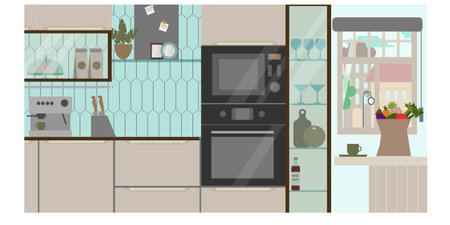Introduction to Low-Carbon Living
Low-carbon interior design is rapidly becoming a top priority for British homeowners who wish to create stylish, comfortable living spaces while reducing their environmental footprint. In the UK context, low-carbon design means making thoughtful choices about materials, energy use, and everyday habits within your home. By opting for sustainable materials, improving insulation, and maximising natural light, you can lower your carbon emissions and energy bills at the same time. This approach not only helps fight climate change but also makes good financial sense given the rising costs of energy in Britain. Whether you live in a classic Victorian terrace or a modern flat, adopting a low-carbon mindset allows you to preserve the charm of your British home while embracing practical changes for a greener future. As more UK households take steps towards sustainability, small actions—like choosing locally sourced furnishings or upgrading to efficient lighting—can add up to significant benefits for both the environment and your wallet.
Assessing Your Home’s Carbon Footprint
Before you can start creating a low-carbon interior design plan for your British home, it’s essential to understand your current carbon footprint. Knowing where and how your home consumes energy not only helps you set realistic goals but also allows you to prioritise actions that will make the biggest impact. Fortunately, there are several practical tools and resources tailored for UK households.
How to Evaluate Your Home’s Energy Usage
The first step is to gather information about your household’s annual energy consumption. This typically includes electricity, gas, and other heating fuels. Most UK homes receive an annual energy statement from their supplier, which provides a breakdown of usage in kilowatt-hours (kWh). If you don’t have this to hand, check your online account or contact your energy provider.
Useful British Tools and Resources
To help visualise and benchmark your energy use, consider the following UK-specific resources:
| Tool/Resource | Description | Website |
|---|---|---|
| Energy Saving Trust Calculator | Estimates your home’s carbon emissions based on typical usage patterns. | Energy Saving Trust |
| EPC (Energy Performance Certificate) | Every home sold or rented in the UK has an EPC rating; check yours for insights into efficiency and potential improvements. | Find Energy Certificate |
| Smart Meters | Installed free by most energy suppliers, these provide real-time data on electricity and gas use. | Smart Energy GB |
| Home Carbon Calculator | An online tool from WWF UK to estimate total household carbon emissions. | WWF Footprint Calculator |
Interpreting Your Results and Setting Baselines
Once you’ve gathered this data, compare your figures with national averages. According to BEIS (Department for Business, Energy & Industrial Strategy), the average UK household emits around 2.7 tonnes of CO2 per year from energy use. Use this baseline to identify areas where your home exceeds the norm—whether it’s heating, hot water, lighting or appliances.
Quick Checklist: What to Assess in Your Home
- Heating system type and age (boiler, radiators)
- Insulation levels (loft, walls, floors)
- Window glazing (single vs double/triple glazing)
- Main appliances’ efficiency ratings (fridge, washing machine, etc.)
- Lighting type (LED vs incandescent)
- Your daily routines – when and how energy is used most intensively
By understanding your current position using these trusted British resources and practical steps, you’ll be better equipped to design a truly low-carbon interior that suits both your lifestyle and local environment.

3. Selecting Sustainable Materials
When planning a low-carbon interior design for your British home, choosing the right materials makes all the difference. Prioritise materials that are locally-sourced, as this reduces carbon emissions linked to transportation and supports UK businesses. For example, opt for British-grown timber certified by the Forest Stewardship Council (FSC) or look for reclaimed wood from local salvage yards—both are excellent choices for flooring, furniture, and fittings.
Eco-friendly finishes also play a crucial role. Choose paints with low or zero volatile organic compounds (VOCs), which improve indoor air quality and are widely available from reputable UK brands. Consider natural materials like wool for carpets and upholstery; British wool is both sustainable and offers superb insulation properties, helping you save on energy bills.
When selecting tiles, worktops, or stone features, investigate suppliers who offer recycled content or source from within the UK. Recycled glass tiles or terrazzo made from construction waste can add character while keeping your project’s carbon footprint in check.
Don’t forget about insulation and wall finishes. Sheep’s wool insulation is a popular choice across the UK due to its renewability, efficiency, and biodegradability. For wall coverings, consider paper-based wallpapers from local manufacturers that use eco-friendly inks.
By focusing on these sustainable and locally-available materials, you ensure your home not only looks stylish but also aligns with low-carbon principles—making it safer, healthier, and more environmentally responsible for years to come.
4. Energy-Efficient Lighting and Appliances
Adopting energy-efficient lighting and appliances is one of the most straightforward ways to lower your homes carbon footprint while saving on your electricity bills. In the UK, a wide range of energy-saving products are available that cater specifically to British homes and lifestyles.
Switching to LED Lighting
LED bulbs use up to 80% less energy than traditional incandescent bulbs and last significantly longer. When shopping for new lighting, look for the lumens rating rather than just wattage; this indicates brightness regardless of energy consumption. Opt for warm white LEDs (around 2700K) for living spaces to maintain a cosy, inviting feel that suits the British home aesthetic.
Choosing Efficient Appliances
When replacing or purchasing new appliances, always check for the official UK Energy Label. Appliances rated A or above are the most efficient currently available. Many leading brands offer “eco” settings on dishwashers and washing machines designed to minimise water and energy usage—perfect for day-to-day British life.
Comparison Table: Common Appliance Efficiency Ratings in the UK
| Appliance Type | Best UK Energy Rating | Typical Upgrade Benefit |
|---|---|---|
| Fridge/Freezer | A or A+ | Up to 40% less energy used vs older models |
| Washing Machine | A | Reduces both water and electricity consumption |
| Tumble Dryer | A++ Heat Pump | Uses half the energy compared to vented dryers |
| Kettle | B (Look for rapid-boil/insulated) | Less electricity wasted per boil |
Practical Tips for Upgrading at Home
- Replace all old bulbs with LEDs—check ceiling fittings, table lamps, and even outdoor lights.
- Select appliances with timers or smart features so they only run when needed.
- If you need help recycling old appliances, contact your local council’s bulky waste collection service—a popular solution across Britain.
Keeping it Local and Practical
Bespoke British retailers like John Lewis, Currys, or AO.com offer detailed efficiency guides and often highlight locally-preferred models. And don’t forget—simple habits like turning off lights when leaving a room still go a long way in making your interior design plan truly low-carbon.
5. Insulation and Draught-Proofing Solutions
When it comes to creating a low-carbon interior design plan for your British home, effective insulation and draught-proofing are essential for both comfort and energy savings. Many UK properties, especially period homes, are notorious for heat loss due to solid walls, uninsulated lofts, or single-glazed windows. The good news is that there are several cost-effective solutions tailored to the UK’s unique climate and diverse housing stock.
Loft and Roof Insulation
One of the simplest upgrades you can make is adding or topping up loft insulation. The UK government recommends at least 270mm of mineral wool, but even a modest layer can drastically reduce heat escaping through the roof. If you have an attic conversion, consider insulating between and under rafters using rigid boards or spray foam—just ensure proper ventilation to avoid damp issues.
Wall Insulation Options
For cavity walls (common in post-1920s homes), professional cavity wall insulation is affordable and highly effective. For older solid-wall properties, internal wall insulation (IWI) offers a practical solution. Fitting insulated plasterboard or thermal lining paper can make a big difference without dramatically altering room dimensions. Always check with a local installer to ensure compatibility with your building’s structure and breathability needs.
Draught-Proofing Windows and Doors
Draughts are a major source of discomfort in many British homes, particularly during chilly autumn and winter months. Self-adhesive foam strips around windows and doors, brush strips on letterboxes, and keyhole covers are all inexpensive DIY fixes that pay off quickly. For sash windows, specialist draught-proofing kits maintain the traditional look while improving efficiency.
Floor Insulation and Gaps
If you have suspended timber floors, insulating beneath the floorboards with mineral wool supported by netting can help retain warmth. Don’t forget to seal gaps between skirting boards and floors—an easy job with flexible filler or silicone sealant.
A Local Approach: Seek Support
Many local councils across the UK offer grants or advice for home insulation improvements, so it’s worth checking what support might be available in your area. By combining these measures, you’ll not only create a cosier home but also take meaningful steps towards reducing your carbon footprint—and saving on those ever-rising energy bills.
6. Maximising Natural Light and Ventilation
Designing a low-carbon interior for your British home means making the most of our country’s unique daylight patterns and breezy weather. Letting in as much natural light as possible not only reduces the need for artificial lighting but also makes your living spaces feel brighter and more welcoming, especially during those shorter winter days.
Positioning and Window Choices
Think about the orientation of your rooms—south-facing windows capture the most sunlight, while north-facing ones provide softer, consistent light. When updating or renovating, opt for double- or triple-glazed windows to improve insulation without sacrificing brightness. Consider installing larger windows or glass doors where practical, such as in kitchens or living areas that benefit most from daylight.
Clever Use of Interiors
Choose lighter paint colours and reflective surfaces to bounce daylight deeper into your rooms. Mirrors placed opposite windows can dramatically increase perceived space and light levels. If privacy is a concern, sheer curtains or frosted glass allow light through while maintaining seclusion.
Encouraging Fresh Air
Natural ventilation is key to reducing energy used on mechanical cooling and heating. Traditional sash or casement windows are ideal for cross-ventilation—open windows on opposite sides of a room to let fresh air flow through. For added efficiency, install trickle vents in window frames to maintain airflow even when windows are closed, helping to reduce condensation and mould risks.
Reducing Reliance on Artificial Systems
By maximising daylight and fresh air, you’ll cut down on electricity use and improve indoor air quality—a win for both your bills and well-being. For those chilly British evenings, consider thermal blinds or heavy curtains to retain warmth after sunset. This approach blends classic British comfort with contemporary low-carbon thinking, making your home energy-smart all year round.
7. Incorporating Renewable Energy Options
When planning a low-carbon interior for your British home, integrating renewable energy solutions is a forward-thinking step that significantly reduces both your carbon footprint and long-term energy bills. The UK offers various options for homeowners looking to harness clean energy, such as solar panels, heat pumps, and other renewables.
Solar Panels: Power from the British Sun
Solar photovoltaic (PV) panels can be fitted on many types of UK homes and are particularly effective when positioned on south-facing roofs. Despite the famously variable British weather, modern solar technology generates substantial electricity even on cloudy days. Not only do solar panels lower your reliance on the National Grid, but they also allow you to export surplus power back, sometimes earning you money via the Smart Export Guarantee (SEG).
Heat Pumps: Efficient Heating Solutions
Heat pumps—whether air-source or ground-source—extract natural warmth from the environment to provide efficient heating and hot water. They work exceptionally well with underfloor heating and well-insulated interiors, making them an ideal partner in low-carbon renovation projects. Although the upfront investment can be considerable, their running costs are much lower than traditional gas boilers.
Other Renewable Technologies
Depending on your location and property type, additional technologies such as biomass boilers or small-scale wind turbines might be viable. These systems further diversify your homes renewable energy sources and contribute to greater energy resilience.
UK Grants and Support Schemes
The UK government supports homeowners through various grants and schemes to make renewables more accessible. The Boiler Upgrade Scheme (BUS) provides financial assistance for installing heat pumps or biomass boilers, while VAT reductions on energy-saving materials help reduce installation costs for solar panels and insulation upgrades. Always check eligibility criteria and apply early, as funds can be limited.
By combining renewable energy options with thoughtful interior design choices, you can create a stylish British home that’s comfortable, cost-effective, and prepared for a sustainable future.

